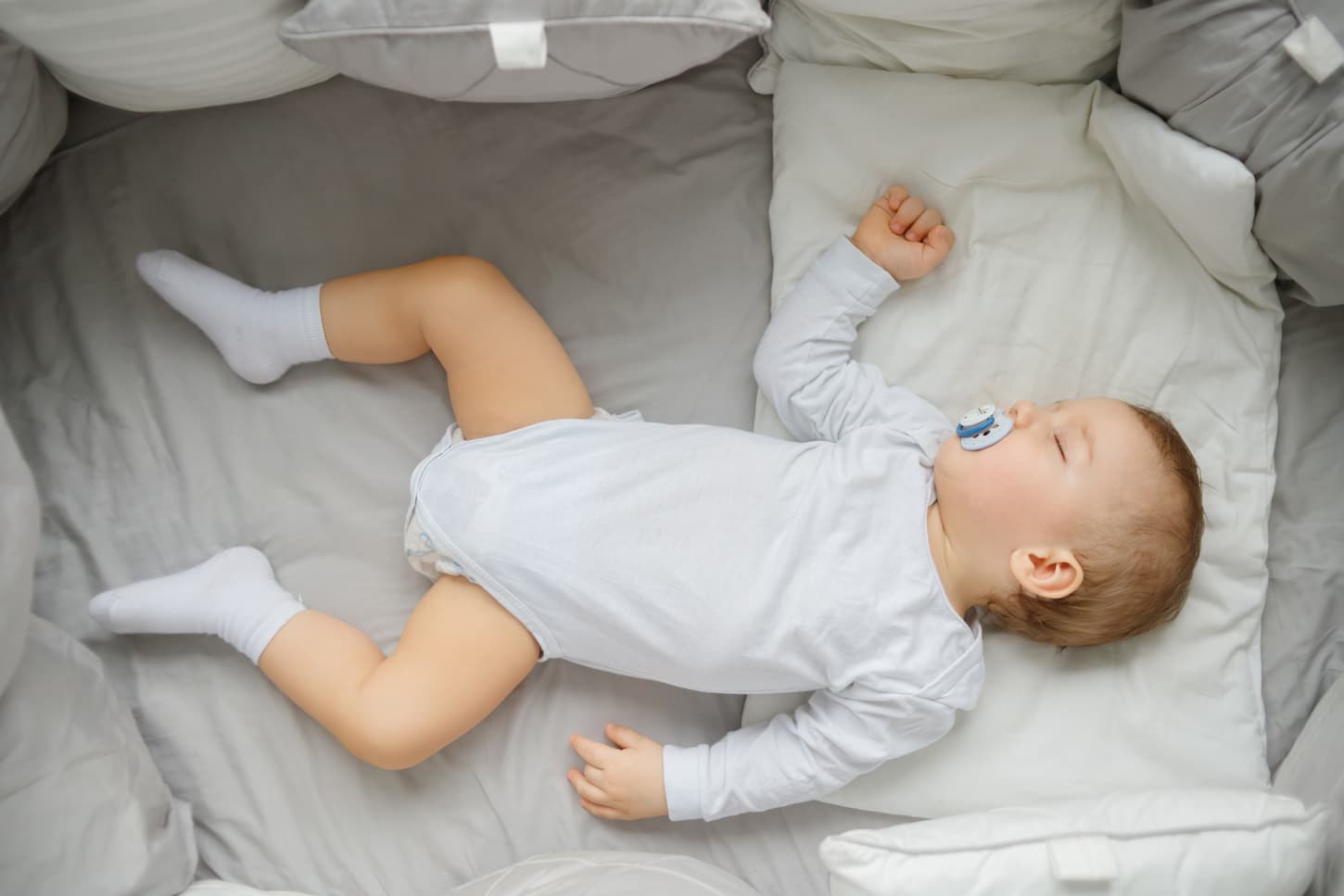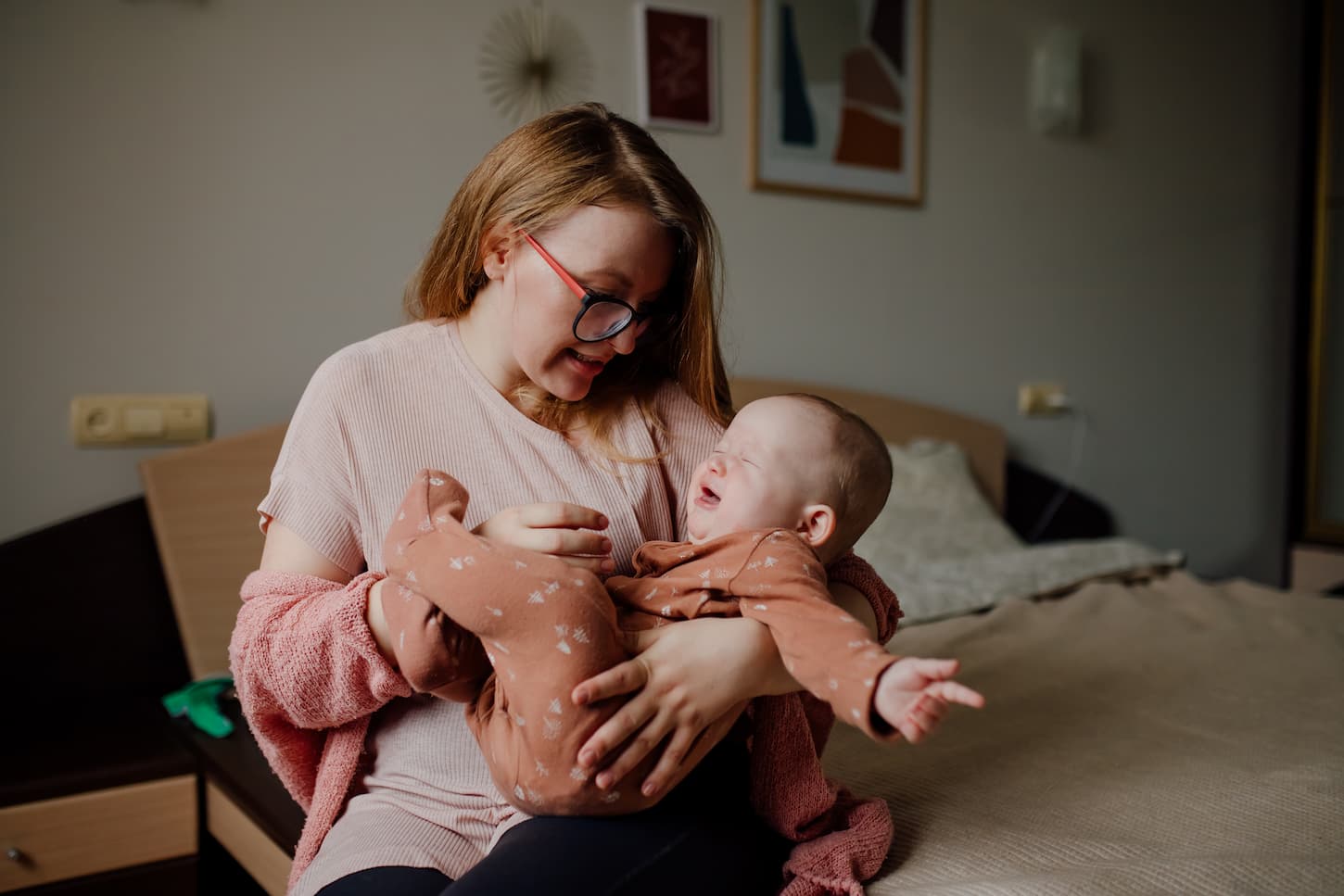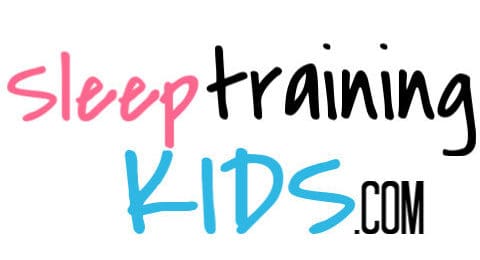One night, as I was putting my kids to bed (and making sure they had all of the appropriate stuffed animals, sippy cups full of water, and their blankies), I wondered if these sleep associations had any effect on sleep regressions.
How are sleep associations and sleep regressions related? Sleep associations are actions that affect our ability to sleep. Children use positive and external sleep associations to self-soothe and overcome sleep regressions, while negative associations make sleep regressions worse.
Children with positive sleep associations have shorter, easier, and fewer sleep regressions. Children with negative sleep associations have harder, longer, and more difficult sleep regressions.
There are three kinds of sleep associations (positive, negative, and external sleep associations) that can affect sleep. So let’s talk about each of those as related to sleep regressions.

Sleep Associations and Sleep Regressions
Sleep associations are any action that helps us get to sleep or get back to sleep. Whether we’re aware of them or not, we all have sleep associations or sleep props that we use.
That being said, sleep associations aren’t a problem until they’re a problem. And, based on how our brains develop during the first four months, they can’t be a problem until a baby is at least 4 months old.
Before 4 months of age, a baby may require help to sleep and it’s recommended that we, as parents, help them by swaddling, soothing, or whatever means possible.
But by about four months old, a baby’s brain matures to a more adult-like sleep pattern. Now a baby has more control over his or her ability to sleep. Every baby requires a different amount of time to master this new ability – and some babies may need more help than others.
In other words, now a baby can and must learn to self-soothe. This is when sleep associations can become positive or negative. This is when sleep associations can make, lengthen, or shorten sleep regressions.
These sleep associations can either help or hinder a baby’s ability to sleep, especially during a sleep regression. There are three main types of sleep associations. They are:
- Positive sleep associations (self-soothing behavior)
- Negative sleep associations
- External sleep associations
Now, these aren’t named positive and negative just because of how they affect sleep. They’re also named for how we’re able to recreate the actions on our own. So it’s both parts.
Let’s talk about each of these 3 types of sleep associations – and then what to do about each one.
The Effects of Positive Sleep Associations on Sleep Regressions
Positive sleep associations, or self-soothing behaviors, are learned behaviors and actions that you do to help yourself fall asleep. Or in the case of a baby, the actions that the baby takes to help themselves fall back asleep.
In other words, these self-soothing behaviors are what help babies adjust to the triggers that caused the sleep regression. These are the behaviors you want your baby to learn so they can get enough sleep.
Examples of positive sleep associations include:
- Shifting positions
- Rocking back and forth
- Curling up or doing leg lifts to get into a fetal position
- Singing, humming, or babbling
- Sucking on a finger, thumb, or pacifier*
- Banging their feet, arms, or head against the mattress
*See A Note on Pacifiers as External, Negative, and Positive Sleep Props further along in this article, or jump there now by clicking here.
Example: As a baby, my oldest son used to roll around in his crib and bang his arms and feet. It was super strange to watch on the baby monitor – but it helped him fall asleep. Thankfully, he’s grown out of that behavior as he’s gotten older!
Negative Sleep Associations and Sleep Regressions
Negative sleep associations aren’t bad behaviors – they’re actions we can’t do ourselves. They’re behaviors done by people around us. These behaviors may have initially helped the baby to sleep.
However, as a baby grows and their brain develops, these negative sleep associations become stimulating enough that they prevent restful sleep. They may still get your baby to sleep for the time being, but it won’t be great sleep. And it will probably only last for a short amount of time – like 20 minutes.
How and when do these negative sleep associations first appear? Here’s what one study concluded:
Findings support the hypothesis that maladaptive parental behaviors develop in reaction to preexisting sleep difficulties.
Longitudinal Study of Preschool Sleep Disturbance, Pediatric Adolesc Med Apr 2008
In other words, this isn’t easy. When our kids don’t sleep well, we naturally step in and try to help. And that leads to negative sleep associations that are actually making the whole situation worse. We’re trying to help – and (accidentally and unknowingly) making sleep problems and sleep regressions worse.
Examples of negative sleep associations include:
- Being rocked, bounced, or lulled to sleep
- Being nursed or bottle-fed to sleep
- Swaddling
- Touching the baby while they fall asleep
Example: My daughter can fall asleep while riding in a car – but she wakes up super cranky and I can tell it was not restful sleep for her.
Using External Sleep Associations During Sleep Regressions
The final sleep props are environmental cues that trigger our brains into getting ready for sleep. Anyone can set them up. They’re in a separate category because they are triggers and not behaviors.
Examples of external sleep associations include:
- A comfortable room temperature
- Blackout curtains
- A white noise machine
- Use of a stuffed animal, blankie, or pacifier* for self-soothing
*A Note on Pacifiers as External, Negative, and Positive Sleep Props
A pacifier is an external sleep association that can be a positive sleep association. However, it can quickly become a negative sleep association if the baby can’t self-apply it – or they rely on a parent to put the binky back into their mouth every time it falls out.
Example: We used to put about half a dozen or more binkies into our kids’ cribs every night – in hopes of preventing a negative sleep association. Eventually, we caved and started using a short binky tether. It was much easier and more effective, even if the “experts” discourage them.

How to Make or Break Sleep Associations During a Sleep Regression
So what, if anything, do we need to do to break our children’s sleep associations? The key to breaking negative sleep associations and creating positive ones to better manage sleep regressions is through behavioral-based sleep training.
Doing nothing and hoping it just goes away doesn’t work. In fact, a long-term sleep study released in 2008 found that:
Early (age 5-17 months) sleep disturbances predicted maladaptive parental behaviors (eg, mother present at sleep onset, giving food/drink after child awakens) at ages 29 and 41 months. Some parental behaviors in turn predicted future bad dreams, total sleep time less than 10 hours/night, and sleep-onset latency of 15 minutes or more.
Longitudinal Study of Preschool Sleep Disturbance, Pediatric Adolesc Med Apr 2008
In other words, sleep disturbances in infants lead to unhealthy parenting behaviors. These unhealthy parenting behaviors lead to additional sleeping problems (like bad dreams, less sleep, and difficulty falling asleep for their kids). And that’s going to make everyone more tired and more cranky.
So doing nothing about negative sleep associations will make things worse.
Instead, here’s what we need to do. We need to use behavioral-based sleep training to:
- Help our children break bad sleep association habits
- Help our children make good, positive sleep association habits
And since behavioral sleep training focuses on behaviors, it’s a completely safe way to see actual results. You can read my article reviewing the scientific literature behind the safety of sleep training (on my sleep training site) by clicking here.
Just remember that breaking a habit is hard. And because it’s a habit that both you and your baby have learned, it’s going to take time for both of you to adjust. You both have to unlearn negative sleep associations. Then, you both have to adjust to the new, positive sleep associations.
Here’s a trick I’ve learned about sleep associations, sleep regressions, sleep training, and the whole process:
External sleep associations can help both you and your baby through this learning process faster. That way, sleep training can be done faster and more efficiently. This will help sleep regressions end sooner. And it’ll get everyone on a path to better, more restful sleep.
Best of luck, friends.
Related Questions
How Long Do Sleep Regressions Last? Sleep regressions usually last anywhere from a few days up to 6 weeks. Usually, they last about 2 weeks. For more details, including 10+ examples, read my article on how long sleep regressions last.
At What Ages do Sleep Regressions Happen? Sleep regressions usually happen at 4, 8-10 months, and 18 months of age. For more specifics on when sleep regressions happen, make sure to read my article on when sleep regressions happen right here.
What Causes Sleep Regressions? Sleep regressions happen when your baby experiences a significant change that disturbs their regular sleep patterns. These changes are often a developmental leap or a time change.
